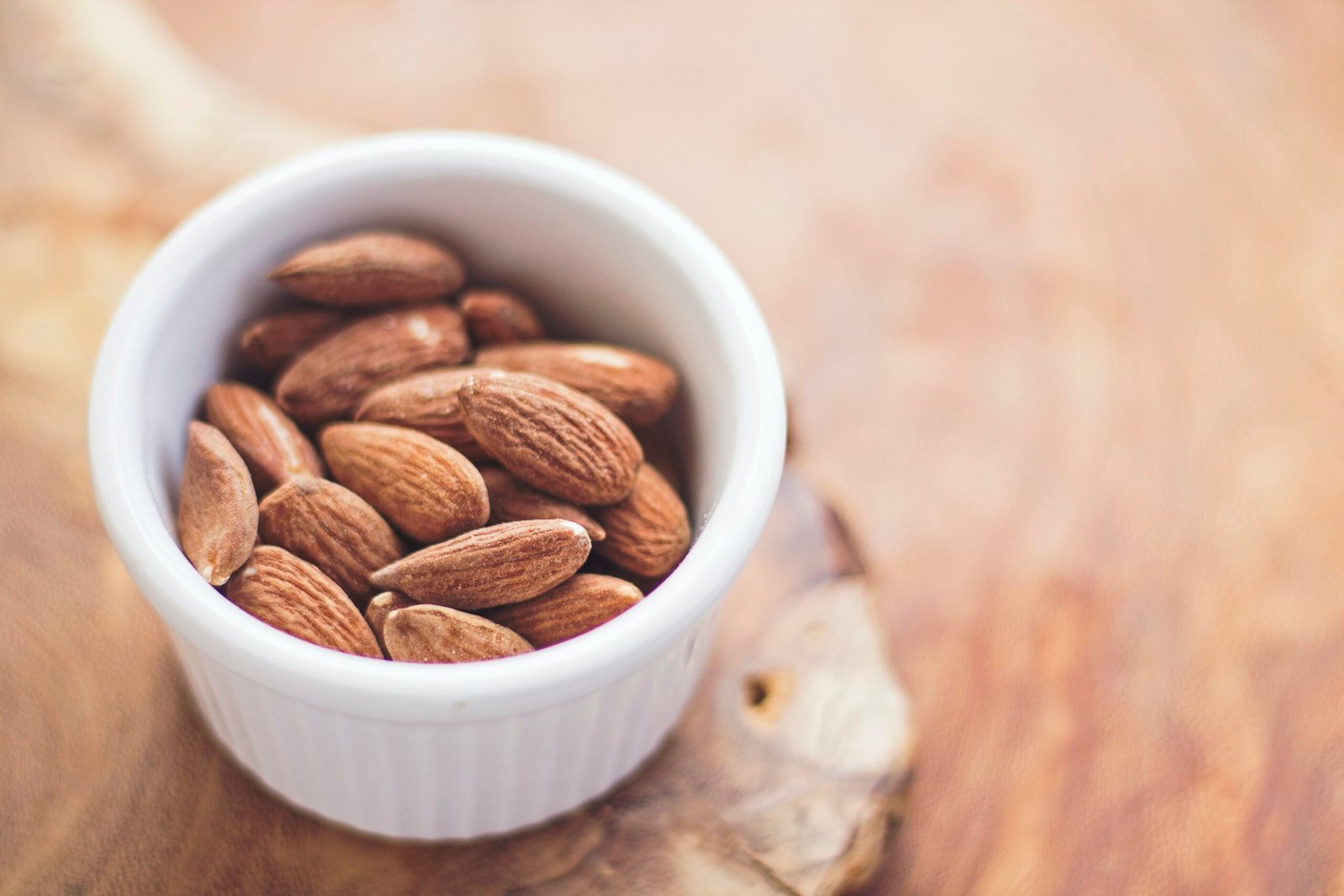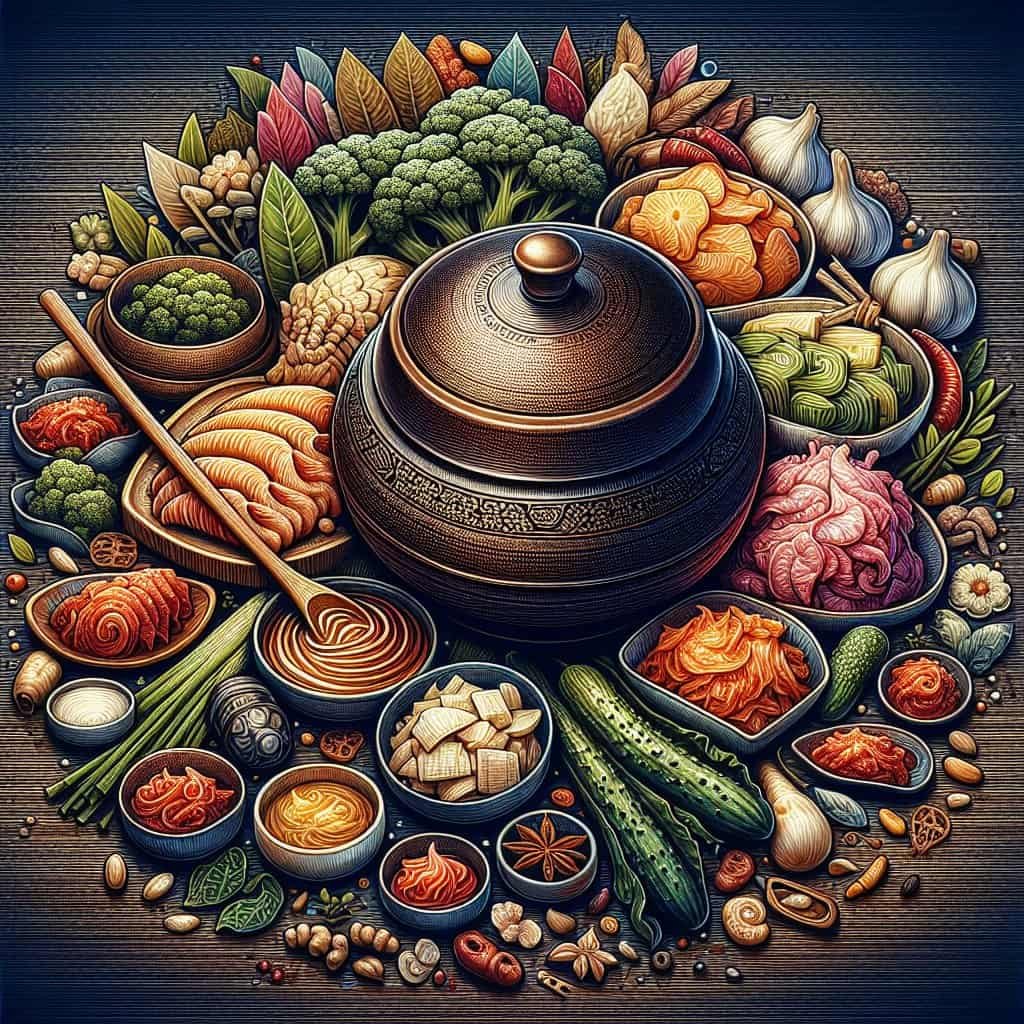If you’ve ever wandered the bustling streets of a Korean neighborhood or savored the mouth-watering flavors of Korean cuisine, you may have wondered: how does Korean cooking differ from other Asian cuisines? From its unique balance of flavors to its diverse range of ingredients, Korean cooking stands out as a culinary experience that is both distinct and inviting. In this article, we’ll take a closer look at the characteristics that set Korean cuisine apart from its neighboring counterparts, and explore the rich traditions and flavors that make it a beloved culinary tradition. So, get ready to embark on a journey through the vibrant and delicious world of Korean cooking!
Influence of Geography
Peninsula Location
Korean cuisine is greatly influenced by its unique peninsula location. Surrounded by the sea on three sides, Korea has a rich culinary tradition that revolves around seafood. The availability of fresh fish, shellfish, and seaweed has shaped the cuisine’s flavors and ingredients. Additionally, being located on a peninsula has also allowed for the development of a variety of fermentation techniques, as the coastal climate is ideal for preserving foods.
Mountainous Terrain
The mountainous terrain of Korea has also had a significant impact on its cuisine. The presence of numerous mountains has limited the amount of arable land, prompting Koreans to rely heavily on vegetables and wild plants as a source of sustenance. This has led to the creation of a wide range of vegetarian and vegetable-based dishes, making Korean cuisine particularly appealing to those who prefer plant-based diets. The abundance of mountainous areas has also provided Koreans with an array of medicinal herbs and plants that are often incorporated into their traditional recipes for their health benefits.
Abundance of Seafood
With its long coastline and rich fishing grounds, it’s no surprise that seafood plays a prominent role in Korean cuisine. From fish and shellfish to seaweed and sea salt, the ocean provides Koreans with a diverse range of ingredients. Whether it’s the iconic seafood pancakes (haemul pajeon) or the famous spicy stir-fried squid (ojingeo bokkeum), seafood is an integral part of Korean culinary culture.
Four Distinct Seasons
Korea experiences all four seasons, and each season brings with it a unique bounty of ingredients. This emphasis on seasonal eating is deeply ingrained in Korean culture, as it allows for the consumption of fresh and nutritious ingredients at their peak flavors. From spring greens like bracken ferns and crown daisies to summer fruits like watermelons and peaches, each season offers a new selection of ingredients that are celebrated and incorporated into Korean dishes.
Role of Fermentation
Kimchi: Staple Fermented Side Dish
No discussion of Korean cuisine would be complete without mentioning kimchi. This staple fermented side dish is a symbol of Korean culture and is consumed with almost every meal. Made from fermented vegetables, typically cabbage or radish, and seasoned with chili, garlic, and other spices, kimchi is tangy, spicy, and packed with umami. It not only adds depth and flavor to other dishes but also provides probiotics and vitamins.
Fermented Soybean Pastes
Another important component of Korean fermentation is the production of various fermented soybean pastes. These pastes, such as doenjang and ganjang, are essential in Korean cooking, providing depth of flavor and complexity to dishes. Doenjang, a rich and earthy paste, is used in soups and stews, while ganjang, a soy sauce-like condiment, is used as a seasoning for various dishes. The process of fermenting soybeans creates unique flavors and enhances the nutritional value of the ingredients.
Fermentation for Flavor Enhancement
Fermentation is a fundamental technique in Korean cuisine as it not only preserves foods but also enhances their flavor profiles. Through the process of fermentation, the taste of ingredients intensifies, resulting in complex and well-balanced dishes. Fermented ingredients are used to add depth, complexity, and umami to a wide range of recipes, making them integral to the overall taste and identity of Korean cuisine.

Importance of Side Dishes
Banchan: Supporting Array of Side Dishes
One of the defining features of Korean cuisine is the tradition of serving a wide variety of side dishes, known as banchan. These small portions of food accompany the main course and provide a diverse range of flavors, textures, and colors to the meal. From pickled vegetables and marinated tofu to braised mushrooms and stir-fried greens, banchan adds depth and variety to the dining experience.
Variety and Quantity
Korean dining is known for its generous portions and wide selection of side dishes. A typical Korean meal may consist of anywhere from three to twelve different banchan, ensuring that there is something for everyone to enjoy. This variety allows for a balanced and well-rounded meal, with contrasting flavors and textures that complement the main course.
Complementary and Balanced
The selection of banchan is carefully chosen to complement and balance the main dish. For example, spicy dishes may be accompanied by cooling and refreshing side dishes, while rich and savory dishes may be balanced with lighter and more acidic options. This attention to balance and harmony is a fundamental aspect of Korean cuisine, reflecting the importance of achieving a holistic and satisfying dining experience.
Focus on Health and Wellness
Use of Fresh and Seasonal Ingredients
Korean cuisine places a strong emphasis on using fresh and seasonal ingredients. By incorporating ingredients that are at their peak, Korean dishes maximize flavor, texture, and nutritional value. This focus on freshness ensures that each dish is vibrant and full of vitality, offering both delicious flavors and optimal health benefits.
Minimal Oil and Fat
Korean cooking tends to use minimal oil and fat, making it a healthier option compared to some other Asian cuisines. Rather than relying on heavy frying or greasy sauces, Korean dishes often use lighter cooking methods such as stir-frying or grilling. This allows the natural flavors of the ingredients to shine through without the added heaviness of excessive oils or fats.
Promotion of Digestive Health
The incorporation of fermented foods in Korean cuisine also contributes to improved digestive health. Fermented foods, such as kimchi and fermented soybean pastes, are rich in probiotics, which support a healthy gut microbiome. Additionally, the emphasis on a wide variety of vegetables and fiber-rich ingredients helps promote regular digestion and overall digestive well-being.
Herbal and Medicinal Foods
Korean cuisine has a long history of incorporating herbs and medicinal ingredients into its recipes. From ginseng and ginger to garlic and perilla leaves, these ingredients not only add unique flavors but also offer various health benefits. Whether it’s boosting the immune system or improving circulation, Korean dishes often feature herbs and medicinal foods that contribute to overall wellness.

Signature Ingredients and Flavors
Gochujang: Spicy and Tangy Red Pepper Paste
Gochujang is a staple ingredient in Korean cuisine, known for its distinct spicy and tangy flavor. Made from fermented chili peppers, glutinous rice, soybeans, and salt, gochujang adds depth and heat to dishes. It is used in various marinades, stews, and dipping sauces, providing a signature taste that is both savory and slightly sweet.
Doenjang: Rich and Earthy Soybean Paste
Similar to gochujang, doenjang is a fermented soybean paste that is widely used in Korean cooking. With its rich and earthy flavor, doenjang adds complexity and umami to soups, stews, and marinades. Packed with protein and beneficial enzymes, this traditional ingredient not only enhances the taste of dishes but also contributes to their nutritional value.
Galbi: Marinated Grilled Short Ribs
Galbi, or marinated grilled short ribs, is a popular meat dish in Korean cuisine. The ribs are marinated in a mixture of soy sauce, garlic, ginger, sugar, and sesame oil, resulting in tender and flavorful meat. The combination of sweet and savory flavors, along with the smoky char from grilling, makes galbi a beloved favorite among Koreans and non-Koreans alike.
Sesame Oil, Garlic, and Chili
Sesame oil, garlic, and chili are three essential ingredients in Korean cooking, adding distinct flavors and aromas to dishes. Sesame oil brings a nutty richness to marinades and stir-fries, while garlic enhances the savory notes and contributes to the complexity of flavors. Chili, either in the form of flakes or as a paste, adds heat and depth to Korean dishes, giving them their characteristic spicy kick.
Rice as the Staple Grain
Role of Rice in Korean Cuisine
Rice holds a central place in Korean cuisine, serving as the staple grain in most meals. It is consumed in various forms, such as steamed rice, rice cakes, and rice flour. Rice not only provides sustenance but also acts as a base to highlight the flavors of other dishes. The simple and plain nature of rice allows it to harmonize with diverse flavors and textures, making it an integral part of a well-rounded Korean meal.
Variety of Rice Dishes
Korean cuisine offers a wide variety of rice dishes, each with its own unique flavors and preparations. From the classic bibimbap, a mixed rice dish with assorted toppings, to gyeran-bap, a simple dish of rice topped with fried egg, there is a rice dish to suit every taste and occasion. Rice is also the main ingredient in rice cakes, which are commonly enjoyed during special celebrations and festivals.
Bap: Steamed Rice
Bap refers to steamed rice, the most common form of rice consumed in Korean cuisine. It is typically cooked pot-in-pot style, where water and rice are layered in a pot and steamed together. This method ensures that the rice is evenly cooked, resulting in fluffy and slightly sticky grains that can be easily enjoyed with a variety of accompanying dishes.
Bibimbap: Mixed Rice with Assorted Toppings
Bibimbap is a beloved Korean dish that showcases the versatility of rice. It consists of a bowl of steamed rice topped with an assortment of cooked or raw vegetables, meat, and a fried egg. The ingredients are arranged on top of the rice and mixed together with a spicy chili paste, resulting in a vibrant and flavorful dish. Bibimbap offers a balanced combination of textures and flavors, making it a popular choice for both Koreans and foreigners.

Cooking Techniques
Frequent Use of Stir-Frying
Stir-frying is a commonly used cooking technique in Korean cuisine, allowing for quick and efficient preparation of dishes. Vegetables, meat, and seafood are often stir-fried with various seasonings such as soy sauce, garlic, and sesame oil, resulting in vibrant and flavorful dishes. The high heat and quick cooking time of stir-frying help to retain the freshness and crispness of the ingredients.
Grilling and Barbecuing
Grilling and barbecuing are integral to Korean cuisine, with many dishes featuring charred and smoky flavors. From galbi and bulgogi to samgyeopsal and dak-galbi, a wide variety of meats and vegetables are cooked over an open flame, imparting a unique and delicious taste. The grill not only adds a distinctive smoky flavor but also allows excess fat to drip away, resulting in healthier and leaner dishes.
Boiling and Braising
Boiling and braising are often used to create flavorful broths and tenderize meats in Korean cuisine. Soups and stews, such as kimchi jjigae and galbitang, are simmered for hours to extract the essence of the ingredients and develop rich flavors. Braising involves slow-cooking meat or vegetables in a seasoned liquid, resulting in tender and flavorful dishes, such as braised short ribs (galbijjim) or soy-braised tofu (dubu-jorim).
Fermenting and Pickling
As mentioned earlier, fermentation plays a significant role in Korean cuisine. The process of fermenting vegetables, such as cabbage for kimchi or radishes for pickles, not only extends their shelf life but also enhances their flavors. Fermented and pickled dishes add complexity, tanginess, and umami to Korean meals, providing a contrast to other dishes and a burst of flavor in each bite.
Spice Level and Heat
Moderate Spice Level
Korean cuisine is known for its use of chili peppers and spicy flavors, but it tends to have a moderate spice level compared to other cuisines. While there are certainly spicy dishes, such as kimchi jjigae and tteokbokki, not all Korean dishes are fiery hot. The focus is on achieving a balanced heat that enhances the overall flavors of the dish without overpowering the other ingredients.
Balancing Heat with Other Flavors
Korean cooking pays attention to balancing the heat of chili peppers with other flavors such as sweetness, saltiness, and acidity. The combination of chili, garlic, soy sauce, and sesame oil creates a harmonious blend that is both spicy and savory. By balancing the heat with other tastes, Korean cuisine achieves a well-rounded flavor profile that is complex and satisfying.
Ssamjang: Dipping Sauce
Ssamjang is a flavorful dipping sauce commonly used in Korean cuisine. Made from a combination of gochujang, doenjang, garlic, sesame oil, and other seasonings, ssamjang adds a burst of flavor to grilled meats and fresh vegetables. It balances the heat of the chili paste with the rich umami of soybean paste, creating a delicious accompaniment that amplifies the taste of the ingredients.

Social and Cultural Aspect
Shared Dining Experience
Korean cuisine is deeply rooted in a shared dining experience. Meals are often enjoyed with family, friends, or coworkers, fostering a sense of community and togetherness. Korean dining etiquette emphasizes communal eating, with dishes being served in large quantities for everyone to share. This communal style of dining not only strengthens social bonds but also contributes to the conviviality and joy of the meal.
Family and Tradition
Family plays a central role in Korean culture, and this is reflected in its cuisine. Traditional Korean recipes are often passed down through generations, preserving family traditions and culinary heritage. Food is a way for families to connect, bond, and celebrate special occasions. Korean cuisine highlights the importance of family values and the preservation of cultural heritage through its emphasis on traditional cooking methods and recipes.
Sharing and Sharing Culture
Koreans have a strong culture of sharing, both in terms of food and communal resources. Sharing plates and communal dishes are common in Korean meals, allowing everyone to sample a wide variety of flavors. This culture of sharing extends beyond the dining table, with Koreans often sharing food with neighbors, friends, and even strangers. The act of sharing food is seen as an expression of hospitality, generosity, and goodwill.
Regional Diversity
Diverse Regional Cuisines
Korea boasts a diverse range of regional cuisines, each with its own unique flavors, ingredients, and culinary traditions. From the spicy and robust flavors of the southeastern region to the milder and delicate tastes of the southern coast, regional cuisines showcase the cultural and geographical diversity of the country. Exploring the different regional dishes allows for a deeper understanding and appreciation of the nuances and variety within Korean cuisine.
North Korean Influences
The division of Korea into North and South has had a significant impact on the culinary traditions of both regions. North Korean cuisine is characterized by its focus on simple and hearty dishes, with an emphasis on grains, vegetables, and stews. Despite the political divide, there are still similarities between North and South Korean cuisines, particularly in the shared love for fermented foods and hearty flavors.
Jeolla Province: Culinary Mecca
Jeolla Province, located in the southwestern part of Korea, is renowned as a culinary mecca. It is known for its rich and diverse flavors, as well as its emphasis on fresh and locally sourced ingredients. Jeolla cuisine features a wide variety of seafood dishes, as well as unique regional specialties such as Jeonju bibimbap and Boseong green tea. The province’s commitment to preserving culinary traditions and promoting local ingredients has elevated its status as a gastronomic destination.
Street Food Culture
Korea’s street food culture is vibrant and diverse, offering a wide variety of quick and delicious snacks. From the iconic tteokbokki, a spicy rice cake dish, to hotteok, a sweet and gooey pancake filled with cinnamon and nuts, street food stalls are a popular destination for locals and tourists alike. The bustling atmosphere and the opportunity to taste a myriad of flavors make exploring Korean street food an exciting culinary experience.
In conclusion, Korean cuisine stands apart from other Asian cuisines due to its distinct flavors, cooking techniques, and cultural significance. Influenced by its geography, fermented foods, emphasis on side dishes, focus on health, and signature ingredients, Korean cuisine offers a diverse and exciting culinary experience. Whether it’s the fiery heat of gochujang, the communal dining experience, or the wide variety of regional cuisines, Korean cooking is a testament to the richness and uniqueness of this vibrant culinary tradition.

